When you're learning to ride and growing, getting the most out of your riding experience requires the right machine for the job. That means starting with a playbike as a beginner, and not jumping to a race-type machine until you're using everything that playbike has to give. The confusing part comes in deciding when to move up to a larger or more powerful bike, and what type of bike is the right choice. A 50cc is generally the first bike that a youngish rider outgrows, and there are three alternate bike sizes to step up to before you have to deal with full-size bikes. It may sound odd, but the next bikes up from 50s are called midsize. Midsize bikes generally have 12-inch rear wheels and 14-inch front wheels. Like the 50s, midsize bikes range from docile four-strokes to full-on two-stroke motocrossers.Next come minicycles ( the name comes from racing classes). Most minicycles have 14-inch rear wheels and 17-inch front wheels, and they range from nearly silent trail machines to world-class racers.Finally, there are the machines called Supermini in motocross racing. These are the largest of small motorcycles with 19-inch front wheels and 16-inch rears. Honda covers all the bases here. The bulletproof CRF150F is the heaviest, but most solidly built of the trailbikes in the class, and the CRF150R has the most power and cutting-edge four-stroke technology while the KX100 and KTM 105 SX are the racing two-strokes.The good news is there are some great choices in every class from almost any manufacturer. It doesn't matter whether you're looking for a learning tool or a racetrack weapon. Playbikes are fine for beginners, forgiving to work on and mild enough for the parents and older siblings to ride a little bit. At the sharp end of the pack are the serious race bikes. These are brutal to beginners, expensive when neglected and they demand time and mechanical talent. One problem that affects all of these small bike classes is the near absence of options that fall in between play and race.Looking at the accompanying comparison charts should shed a little light on the height and weight of these bikes. We also included guidelines on ideal sizes of the riders for each class of machinery. As always these are guidelines, and you must be aware that your skill, fitness and confidence may allow you to safely ride a more advanced bike.Parents, don't be tempted to jump a rider to a larger machine so they can "grow into it"-a motorcycle isn't a sweatshirt. Dad, do you ride? Putting a 100-pound rider on a 200-pound bike is the same as an adult piloting a 400- to 475-pound dirt bike. What would that do to your confidence and safety? Most of these small bikes hold their value well, so trading up a few times shouldn't break the bank, and it will be far safer (and more fun) for the rider to be on a proper bike for his or her skill, size and confidence.Another part of the charts that might require explanation is the "Ideal Height" column. We note that a 125cc four-stroke playbike can be piloted by a taller rider than an ideal-sized 85cc two-stroke rider. The two-stroke has a taller seat height, more power and vastly better suspension, so you would think it would suit a taller rider. A tall rider can stay out of trouble easily with five horsepower and relatively short travel suspension when he or she could be at risk with 20 horses, a violent power delivery and nearly a foot of suspension travel. When you see those ratings for rider height, though, those at the taller end of the spectrum should be a beginner to stay with the smaller bike. Staying in the middle of the height and weight range is the best bet.We didn't place a rating on value in the charts, but just assume that the race bikes are more expensive and time-consuming to maintain than the more industrial playbikes.
Latest
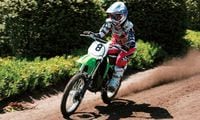
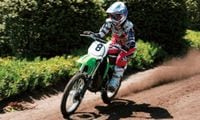
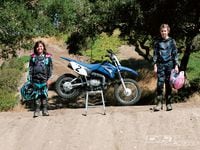
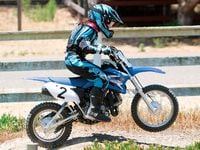
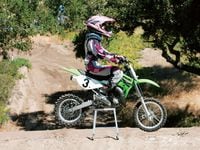



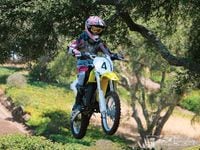
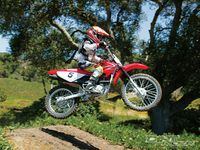
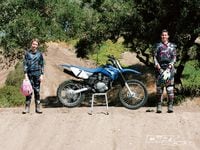
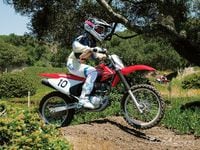
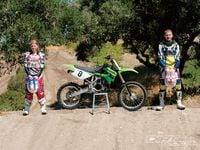

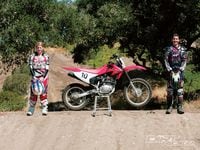
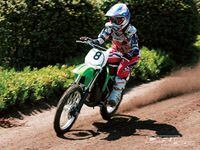
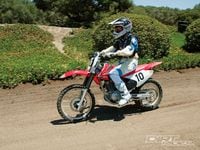

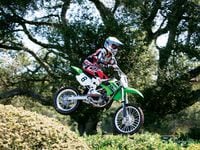
/cloudfront-us-east-1.images.arcpublishing.com/octane/44W4OD5KDZFD3FQWWHZV63P4TY.jpg)
/cloudfront-us-east-1.images.arcpublishing.com/octane/SQ3CEIVCOJF7FDERDVDKKPIC7A.jpg)
/cloudfront-us-east-1.images.arcpublishing.com/octane/LLLQLRK2DBH4PN66MDNA3AFJNY.jpg)
/cloudfront-us-east-1.images.arcpublishing.com/octane/5DMU4K752FBWLLJD432GRAAH2A.jpg)
/cloudfront-us-east-1.images.arcpublishing.com/octane/TGHDVMIODJC4BNKJDZKKTSWXWI.jpg)
/cloudfront-us-east-1.images.arcpublishing.com/octane/5KYMT24REJEFPNO2J2M76MXERM.jpg)

/cloudfront-us-east-1.images.arcpublishing.com/octane/3GXGR3EKSNH5NI3CWHV5SJ7TXE.jpg)
/cloudfront-us-east-1.images.arcpublishing.com/octane/JEU3ONDWEFCAZNAZJOU24OJ2PM.jpg)
/cloudfront-us-east-1.images.arcpublishing.com/octane/JQ6LMK6LLBAQJIL2AH56UIUKWU.jpg)
/cloudfront-us-east-1.images.arcpublishing.com/octane/QUSF4LLRM5DDPCJW25RINQRJPE.jpg)
/cloudfront-us-east-1.images.arcpublishing.com/octane/FYDGK7GF4JBPXERA5RAZPY3YJI.jpg)
/cloudfront-us-east-1.images.arcpublishing.com/octane/JE7KMNASNRGR7FLYAFRZAR7T7E.jpg)
/cloudfront-us-east-1.images.arcpublishing.com/octane/7RCNKJJNXBF4LBKZXE2INNWZUY.jpg)
/cloudfront-us-east-1.images.arcpublishing.com/octane/BAGM5E4EWBHFNLZOXMSLOLKQGU.jpg)
/cloudfront-us-east-1.images.arcpublishing.com/octane/RSX65VBXY5FRLIY4LN6WLOKAFM.jpg)
/cloudfront-us-east-1.images.arcpublishing.com/octane/3EO2CNKWUFBGNMGNJPETW5HCNY.jpg)
/cloudfront-us-east-1.images.arcpublishing.com/octane/IYHM55XRNVHF3DSS3467PZ7ONQ.jpg)
/cloudfront-us-east-1.images.arcpublishing.com/octane/L7K3FIINEBHMZI2TXTUE4FXH7I.jpg)
/cloudfront-us-east-1.images.arcpublishing.com/octane/XE7P5YXNZZDUTIGW4YNWQRDVY4.jpg)
/cloudfront-us-east-1.images.arcpublishing.com/octane/AV55DOHQ3BEXJLPWR6UWLYUSAQ.jpg)
/cloudfront-us-east-1.images.arcpublishing.com/octane/MMROGOYHXZAYDC4RKIDJ4VRSGA.jpg)
/cloudfront-us-east-1.images.arcpublishing.com/octane/FHRWLPEOTBFOHFTQLIHJNIXCFQ.jpg)
/cloudfront-us-east-1.images.arcpublishing.com/octane/J2RUDOXTOZHBXOFCUQKBAGBMAQ.jpg)